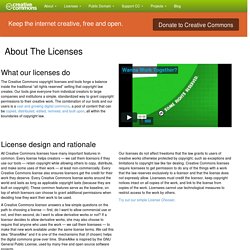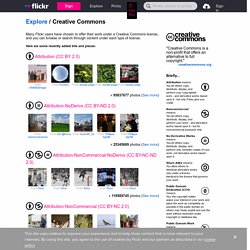

Understanding Copyright, Fair Use, and Creative Commons, as they apply to Education. As we studied this topic in an online course I’m taking, I realized how little I understood it, and figured I wasn’t alone in that regard. After studying this topic in the “Implementing Instructional Technology Innovations” course I am taking online at UW-Stout with instructor Ann Bell, I wanted to understand it even better, since I struggled with it in the fast paced course as we covered it. I have to imagine that I am not alone in my confusion over how I can or can’t use copyrighted materials, especially in education, where there are some special allowances. I assume that when instructors want to know what they can or cannot do with copyrighted materials, they may often have a hard time figuring it out. I really wanted to understand the topic and provide resources to help others do the same.
Similarly, understanding how to leverage Creative Commons licensing was also not terribly straightforward, and I wanted to understand that better too. Using Copyrighted Materials - “Fair Use” About The Licenses. Our public copyright licenses incorporate a unique and innovative “three-layer” design.

Each license begins as a traditional legal tool, in the kind of language and text formats that most lawyers know and love. We call this the Legal Code layer of each license. But since most creators, educators, and scientists are not in fact lawyers, we also make the licenses available in a format that normal people can read — the Commons Deed (also known as the “human readable” version of the license). The Commons Deed is a handy reference for licensors and licensees, summarizing and expressing some of the most important terms and conditions.
Think of the Commons Deed as a user-friendly interface to the Legal Code beneath, although the Deed itself is not a license, and its contents are not part of the Legal Code itself. Searching for open content is an important function enabled by our approach. Combined flowchart. How To Attribute Creative Commons Photos. Best practices for attribution. You can use CC-licensed materials as long as you follow the license conditions.

One condition of all CC licenses is attribution. Here are some good (and not so good) examples of attribution. Note: If you want to learn how to mark your own material with a CC license go here. Examples of attribution Here is a photo. This is an ideal attribution Because: Title? Author? Source? License? This is a pretty good attribution Title?
Author? Source? License? This is an incorrect attribution Photo: Creative Commons Title? Author? Source? License? This is a good attribution for material you modified slightly Title, Author, Source, and License are all noted Modification? This is a good attribution for material from which you created a derivative work Original Title, Author, Source, and License are all noted Derivative? New author of the derivative work is also noted Note: If you're at a point where you are licensing derivative works, go to Marking your work with a CC license. Title? Author? Source? License? 1. Creative Commons. Many Flickr users have chosen to offer their work under a Creative Commons license, and you can browse or search through content under each type of license.

Here are some recently added bits and pieces: Attribution License » 89205806 photos (See more) Attribution-NoDerivs License » 23565894 photos (See more) Attribution-NonCommercial-NoDerivs License » 110097848 photos (See more) Attribution-NonCommercial License » 60002413 photos (See more) Attribution-NonCommercial-ShareAlike License » 128332257 photos (See more) Attribution-ShareAlike License » 46300491 photos (See more) Public Domain Dedication (CC0) » 3477152 photos (See more) Public Domain Mark » 9461619 photos (See more) "Creative Commons is a non-profit that offers an alternative to full copyright.
" creativecommons.org Briefly... Attribution means: You let others copy, distribute, display, and perform your copyrighted work - and derivative works based upon it - but only if they give you credit. Add a Creative Commons license to your photostream.